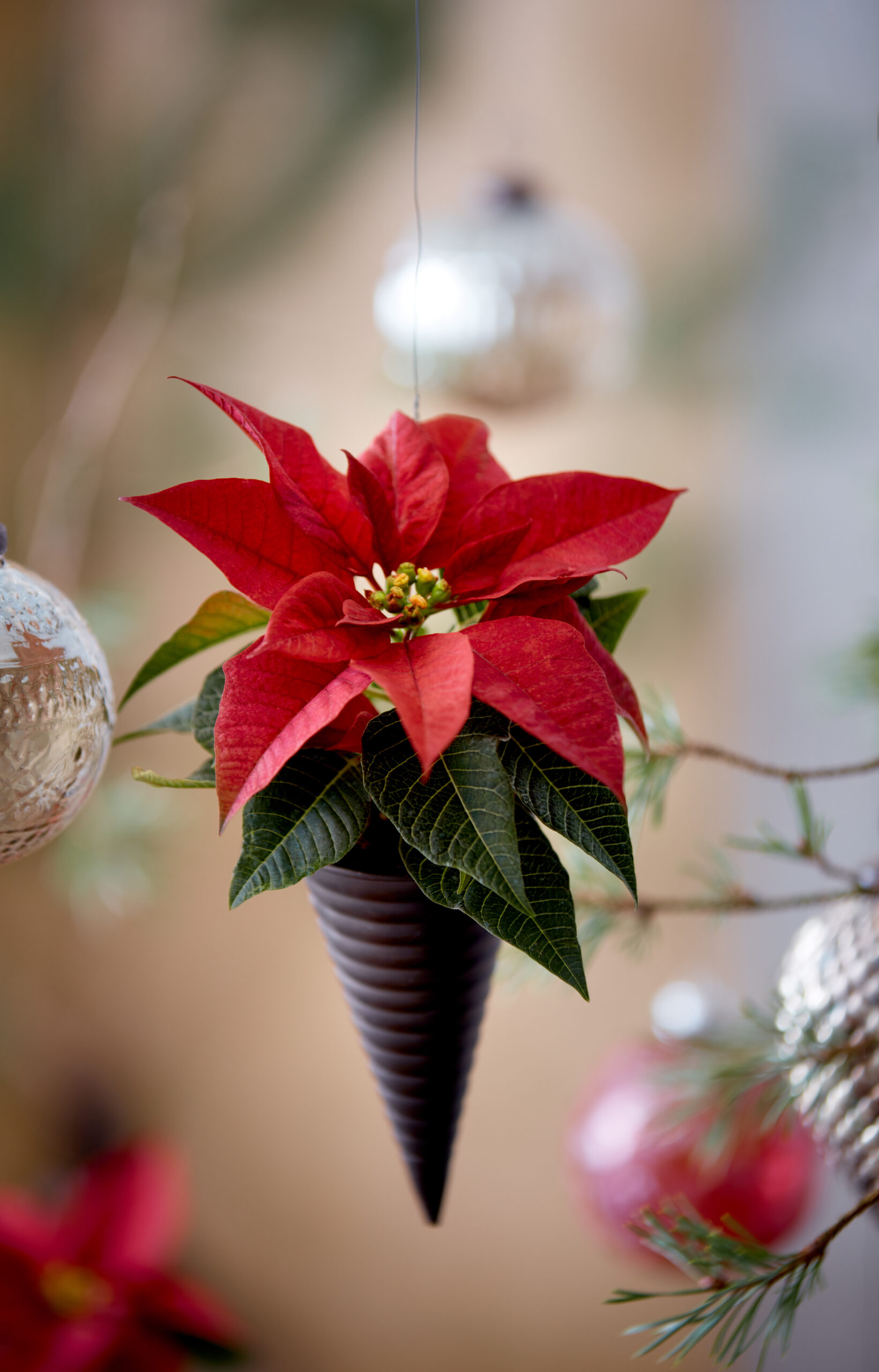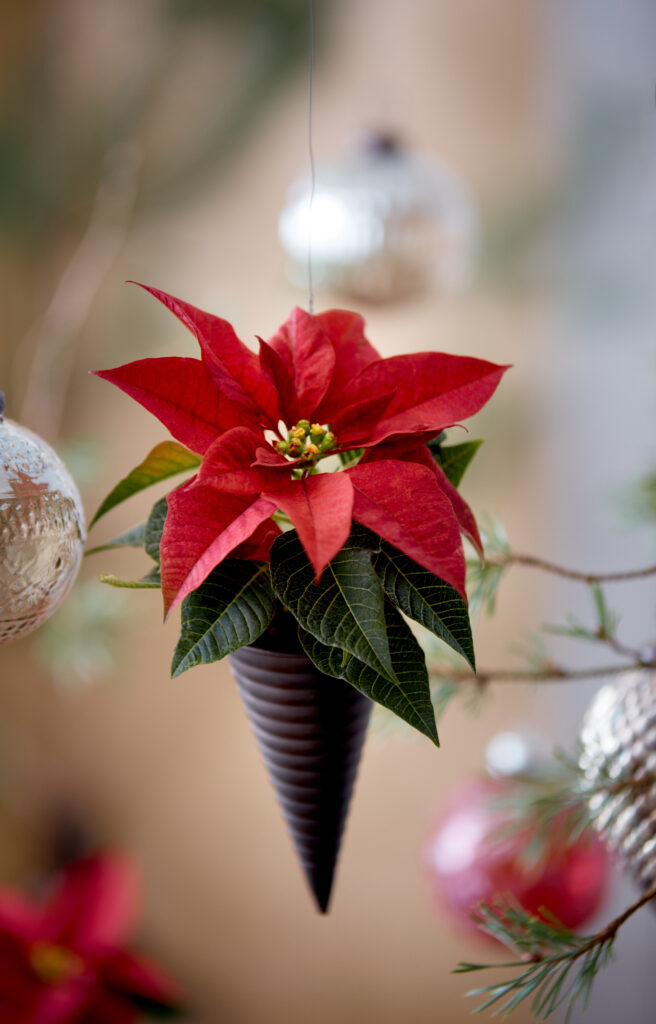 Nothing says that the countdown to Christmas is under way better than a beautiful poinsettia laden with gorgeous coloured bracts. With their image adorning everything from Christmas cards to gift wrap, poinsettias are the established emblem of the festive season, bringing cheer to our homes in the darkest days of winter as families gather to spend quality time together.
Nothing says that the countdown to Christmas is under way better than a beautiful poinsettia laden with gorgeous coloured bracts. With their image adorning everything from Christmas cards to gift wrap, poinsettias are the established emblem of the festive season, bringing cheer to our homes in the darkest days of winter as families gather to spend quality time together.
With their traditional red-topped bracts set to grace our homes in the coming months, poinsettias bring the beauty of nature indoors, renowned for their unrivalled ability to blend with glittering decorations, sparkling lights and advent calendars to create that cosy festive atmosphere that everyone craves in the depths of winter. You could, however, be forgiven for thinking that poinsettias are a great British institution. In fact, their journey to the shores of this island began almost 200 years ago, more than 5,000 miles away in its native home – the highlands of Central America.
Here, the experts at Stars for Europe, the leading poinsettia marketing group, reveal five fascinating facts about the history of the much-loved poinsettia
1 When was the poinsettia first discovered?
The poinsettia has been a symbol of Christmas throughout our childhoods, but its story began almost two centuries ago, when a German scientist called Johann Friedrick Klotzsch officially listed it as a newly discovered species in 1834. The novel specimen had been collected by a duo of renowned explorers, botanists and plant-hunters while on an expedition in Mexico that began in 1803.
2 How did the name ‘poinsettia’ originate?
If you study plant labels in depth at the garden centre, or have a degree in botany, you’ll know that the Latin name for this festive favourite is Euphorbia pulcherrima – not exactly catchy! Its widely accepted common name, poinsettia, is derived from the name of the diplomat Joel Roberts Poinsett. Joel was the first United States Minister to Mexico who also happened to be an avid botanist. He first set sight on the poinsettia on a visit to Mexico in the 1820s and made it his mission to bring this fascinating new flora back to the United States. By 1836, the plant became synonymous with his name.
3 What’s the link between poinsettias and Christmas?
A beautiful tree that fills the room with a Christmassy pine fragrance, a giant tin of family chocolates and a dazzling poinsettia are all must-buy essentials in the run-up to the big day, but how did poinsettias become inextricably linked with Christmas? The opening lyrics of a classic Christmas carol offer a clue: ‘Silent night, holy night…’ In their native Mexico, poinsettias are widely known as Flowers of the Holy Night or ‘Flor de Nochebuena’ – meaning Christmas Eve flower. Some say the star-shaped pattern of the poinsettia’s leaves represent the Star of Bethlehem, which led the Wise Men to Jesus.
4 The link between poinsettia, Aztecs and legend – revealed
Travel back in time to the period between the 14th and 16th centuries, and the Aztecs who resided in today’s Mexico turned to poinsettias to decorate temples. The plants were held in high regard as a symbol of new life for warriors who had perished in battle, and were a favourite choice of Montezuma, ruler of the Aztecs who believed that the plant’s familiar red bracts represented the blood of an Aztec goddess who died of a broken heart – a legend that spread across the world and inspired the poinsettia’s name in French: Etoile d’amour, meaning Star of Love.
5 Do poinsettia bracts have to be red?
The bracts (upper leaves) of poinsettias are likely to be depicted on Christmas cards as intense shades of red, a colour that’s traditionally associated with the festive season, but modern plant breeders have brought a plethora of colours to UK garden centres that cater for every taste imaginable. Far from only being available in red, poinsettias are on sale this season in a host of colours, from ice white to salmon pink, natural cream, shades of yellow and even variegated / marbled colours. Why not pick up one of these stunning novel shades – it’ll be a real talking point in your home over Christmas!
Find out more
To find out more about Stars for Europe, and to access its incredible library of advice, aspirational imagery and content please visit https://www.starsuniteeurope.eu/en/
NOTES TO EDITORS
Stars for Europe
Stars for Europe (SfE) is a marketing initiative founded by European poinsettia breeders Dümmen Orange, Selecta One, Beekenkamp and Syngenta Flowers, supported by MNP Flowers. The initiative began in 2000 with the aim to promote and secure long-term poinsettia sales in Europe. SfE activities are currently taking place in 22 European nations.
Press contact
Stars for Europe UK press office
Hornby Whitefoot PR
Phon: 07851 610573
Mail: kimberley@hornbywhitefootpr.co.uk

